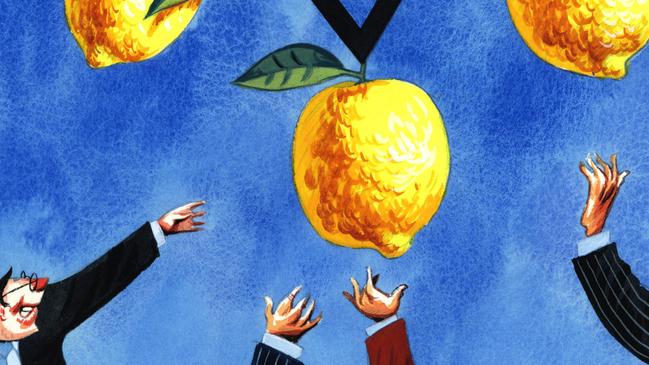As markets lurch sideways, make friends with franking credits

There are many reasons for thinking the 20 per cent or so fall in global share and bond prices we saw during the first half of 2022 may only be a partial correction in the bubble of everything.
However instead of markets falling further, they could simply go sideways for some years to enable excesses in valuations and earnings to get worked out.
If so, the recent recovery in equity and bond prices will prove to be just another bear market rally soon to stall.
Sideways markets are quite common for the Australian share market. Over the last 40 years, about a third of the time share prices went largely sideways for two or more years.
The longest recent period was from 1988 to 1993 where the market remained range bound, neither falling or rising more than 20 per cent over five frustrating years. Other notable flat spots in the share price trend were from 2000 to 2002 and 2009 to 2013.
All three of these follow periods of irrational exuberance, similar to where we are today when only months ago SPAC billions were invested in flying robotic taxi companies – where both the flying taxi and the license to use one doesn’t yet exist.
The larger US market offers investors a more reliable price growth, but that would be expected given its lower dividends and propensity for buy backs.
The number one and two investing strategy for sideways share markets is dividends and franked dividends. In the absence of share price growth, the only way to generate return from a buy and hold strategy is dividends.
Fortunately, in Australia many of our companies pay a high proportion of profits out as dividends, making up half the market’s total investment return.
Fortunately, our tax system gives a credit for tax paid, such that for instance a nil tax pension investor (such as a retiree) enjoys about one-third lift in pre-taxed dividends. If you think a sideways market is ahead for sharemarkets, then direct more money to high dividend companies and more to the Australian sharemarket.
Time will tell if popular private equity investments that rely on exiting into rising markets can still do so. Some fund managers manufacture additional income for investors through strategies like chasing the dividend calendar. Others do so selling options which in a flat market may not be at the expense of missing out on rising prices.
Some might wish to try their share trading skills riding up and down short-term momentum within a longer-term trendless or even falling market. This might even include actively managed value funds that buy what becomes cheap and sells what becomes expensive.
Even in an overall flat market, industry sectors can rotate in appeal. For instance, unloved energy stocks limped into value last year, then shot up and out of value earlier this year and may be heading back as recession fears arise.
Property bulls will correctly point out Australian residential property prices don’t go sideways. That is because they have been supercharged by many decades of easing monetary and lending conditions. You have to look to the US, specifically the Case-Shiller index to find examples of where house prices go sideways.
They did so from 1990 to 1996 and from 2009 to 2012 – the latter after first taking a year to fall 20 per cent from their pre-Global Financial Crisis high. Many commentators are speculating the rise in interest rates will cause a similar fall in Australian house prices.
However, no one seems to yet be speculating that they could languish for years after doing so.
With property investing for rental income could be a more rewarding strategy than growth – prolonged inflation aside.
This would favour commercial property and residential units which generally pay higher income. Units certainly didn’t enjoy recent price rises and offer less capital risk and that of income being squeezed from rising costs and land taxes. Depreciation allowances are worth tilting towards, however they are poor cousins to franking credits having to be given back at sale.
Lastly, the bond and term deposit market is finally rewarding investors. Given the level of indebtedness of governments who influence rate setting and the insensitivity of the other indebted to high rates, it is my view that investors shouldn’t expect to being overly rewarded. By all means, enjoy fairer yields from investment grade securities but don’t be surprised if it doesn’t compensate you for inflation. Higher yields might be a good tactical move if a recession is around the corner.
The best time to take on credit risk is when you are most compensated doing so which is during times of distress. Be careful doing so too soon to avoid being distressed by plunging capital values.
Doug Turek is a partner with Minchin Moore Private Wealth






